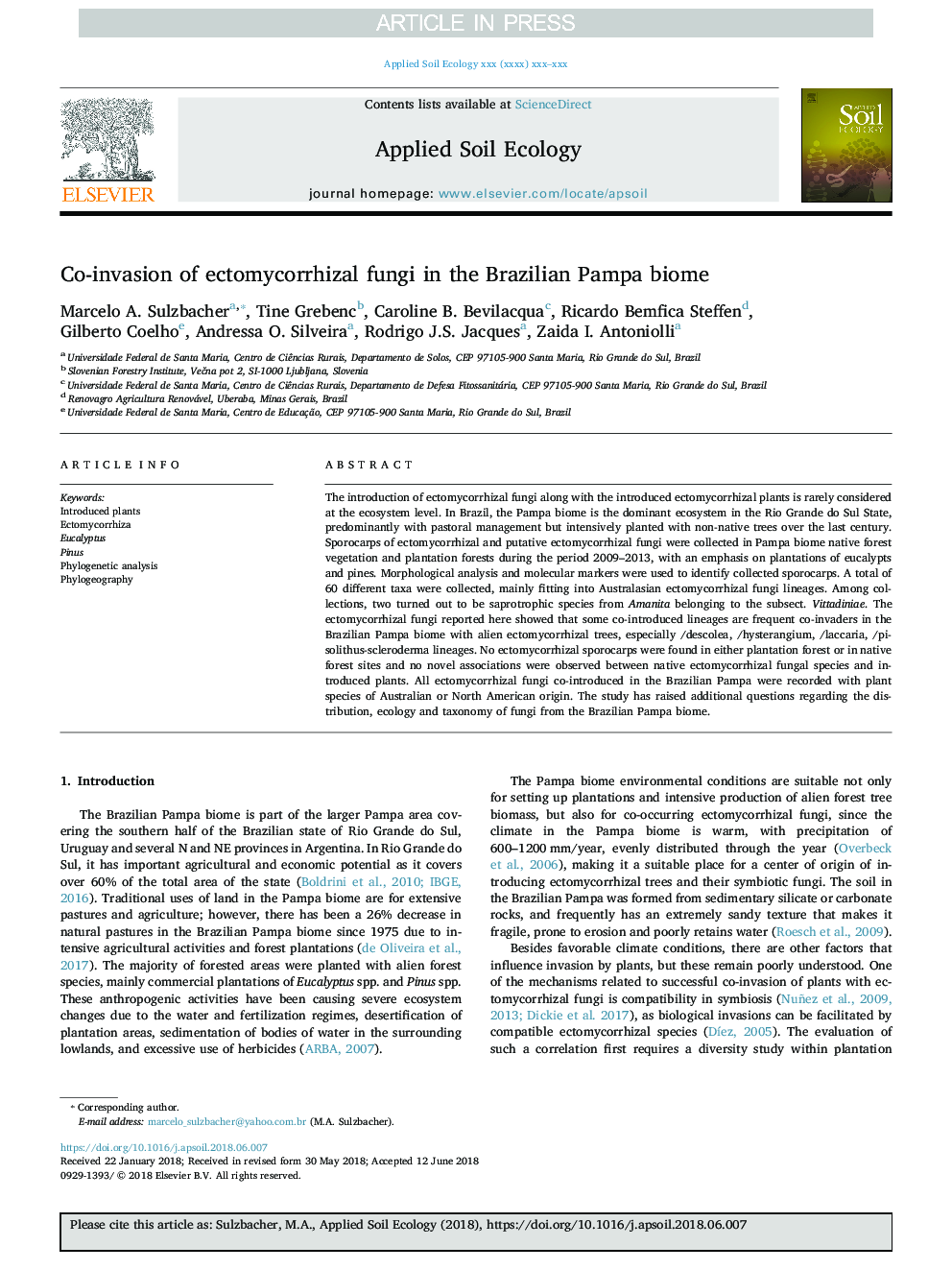| Article ID | Journal | Published Year | Pages | File Type |
|---|---|---|---|---|
| 8846588 | Applied Soil Ecology | 2018 | 8 Pages |
Abstract
The introduction of ectomycorrhizal fungi along with the introduced ectomycorrhizal plants is rarely considered at the ecosystem level. In Brazil, the Pampa biome is the dominant ecosystem in the Rio Grande do Sul State, predominantly with pastoral management but intensively planted with non-native trees over the last century. Sporocarps of ectomycorrhizal and putative ectomycorrhizal fungi were collected in Pampa biome native forest vegetation and plantation forests during the period 2009-2013, with an emphasis on plantations of eucalypts and pines. Morphological analysis and molecular markers were used to identify collected sporocarps. A total of 60 different taxa were collected, mainly fitting into Australasian ectomycorrhizal fungi lineages. Among collections, two turned out to be saprotrophic species from Amanita belonging to the subsect. Vittadiniae. The ectomycorrhizal fungi reported here showed that some co-introduced lineages are frequent co-invaders in the Brazilian Pampa biome with alien ectomycorrhizal trees, especially /descolea, /hysterangium, /laccaria, /pisolithus-scleroderma lineages. No ectomycorrhizal sporocarps were found in either plantation forest or in native forest sites and no novel associations were observed between native ectomycorrhizal fungal species and introduced plants. All ectomycorrhizal fungi co-introduced in the Brazilian Pampa were recorded with plant species of Australian or North American origin. The study has raised additional questions regarding the distribution, ecology and taxonomy of fungi from the Brazilian Pampa biome.
Related Topics
Life Sciences
Agricultural and Biological Sciences
Ecology, Evolution, Behavior and Systematics
Authors
Marcelo A. Sulzbacher, Tine Grebenc, Caroline B. Bevilacqua, Ricardo Bemfica Steffen, Gilberto Coelho, Andressa O. Silveira, Rodrigo J.S. Jacques, Zaida I. Antoniolli,
